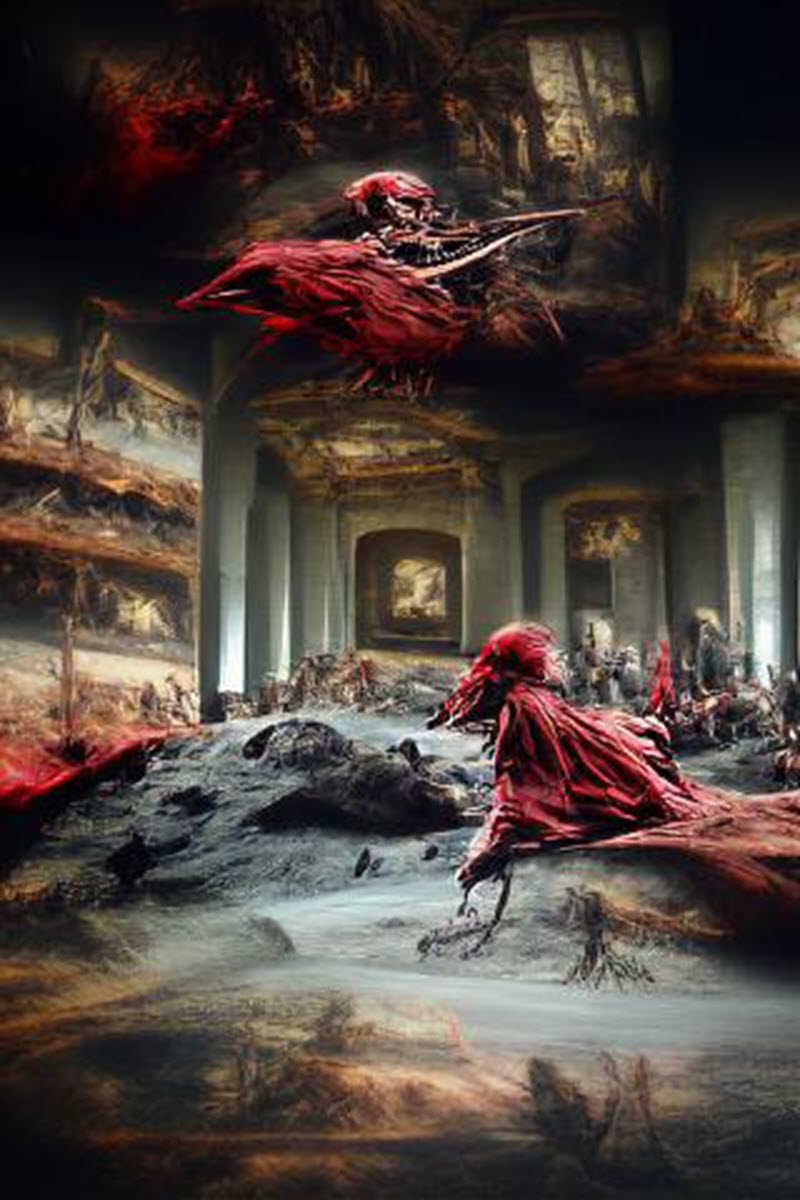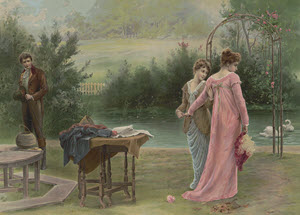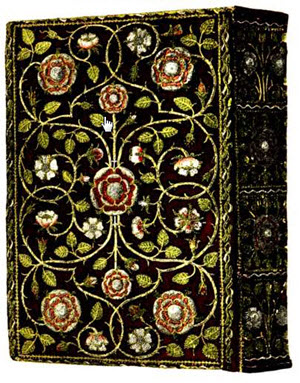THE MASQUE OF THE RED DEATH.

The Masque of the Red Death - Summary
The Red Death is a short story by Edgar Allan Poe that tells the story of how a prince and his noblemen who have taken refuge in an abbey while a plague devastates their country. Thinking themselves safe, and oblivious of the suffering of their subjects, the nobles hold a Masque, a type of masked ball, to amuse themselves and while away the time while they wait for the Red Death to abate. They are not as safe as they think, however, and find that Death had come and joined their feast life a thief in the night. The name of the plague is an obvious allusion to the deadly Black Death that had devastated Europe during the Middle Ages.
Summary
Despite the fact that an illness (the Red Death)kills half of the subjects, Prince Prospero (an obvious allusion to Prosperous, but also the Shakespearean character of the name , who has retreated to an abbey designed by him and weighs in safety, gives a pompous masked ball. Prince Prospero loves the extraordinary, his taste is strange. He has a good eye for light and colors. Through the design of the rooms, he has a considerable influence on the appearance of the masked, through finely tuned moods ("finely tuning the atmosphere") – for example, the light, etc. The event takes place in seven rooms, of which no more than one can be seen in full. In the first room there are Gothic windows with colorful glasses that correspond to the color of the window decoration. The second room is purple, the third green, the fourth orange. Another ballroom is white, the next purple and finally there is a black hall with scarlet windows.
While the extravagant festival takes place, a clock strikes every full hour, the sound of which frightens even the most exuberant and crazy. After the chime of the bell, there is always relieved laughter in the festive society. When the clock strikes twelve, a figure appears in the mask of the Red Death. Their presence triggers fear. The frightening figure falls out of Prospero's festive design, it reminds of the plague and its victims. As a result, the prince calls for unmasking the unknown. This, however, passes through several rooms, and the guests retreat. So Prince Prospero himself pulls a dagger and takes up the pursuit, but the mask turns to her pursuer, a sharp cry sounds – and Prospero sinks dead to the ground. Now finally the guests try to unmask the unknown, but have to realize that he is actually the Red Death. There is nothing under the mask: no face, no skeleton – the mask is only itself. The Red Death has moved into the castle and reigns unrestricted.
Poe had witnessed a major cholera epidemic and the reactions it triggered in Baltimore in 1831. Poe's short story has similarities to the framework plot of Boccaccio's Decameron, in which wealthy Florentines retreat to a country house/castle in order not to be infected with the plague. Also the Italian name Prospero, which means as much as "wealthy", refers to Italy comparable to the Fortunato in The Barrel Amontillado. Further references can be found to Thomas Campbell's Life of Petrarch. In a review of the book in 1841, Poe had complained that the author had not adequately depicted the plague in his work. Moreover, it is hardly a coincidence that Poe's protagonist bears the name of the almighty wizard from William Shakespeare's romance The Tempest.
The name "Red Death" is chosen wisely, as its victims die of a kind of hemorrhagic fever under terrible bleeding. Poe had lost mother and foster mother to tuberculosis, his wife also suffered from this disease and the blood falls associated with it. At the same time, the name refers to the "Black Death". The first-person narrator, who only casually brings himself into play three times, is omniscient like an auctorial narrator.
The disease, the "Red Death", can prevail because the prince, himself wealthy("prosperous"), takes care of himself and his own pleasure above all. Instead of taking responsibility for the suffering country, he gives an elaborate masquerade ball. And instead of letting the masks work for himself and out of himself, he has a significant influence on the design of the festival by determining its external circumstances. So the prince sees only himself, his own wishes and needs, not those of the country, the population or his guests.
As an allegorical narrative set in the timeless space of a Gothic fantasy architecture and showing the incursion of the plague into the supposedly safely sealed castle of Prospero, The Masque of the Red Death can accordingly be understood as an existential parable about the inevitability of death as well as a study of an insane eccentric. [1] However, if one considers The Mask of the Red Death in the context of Poe's oeuvre, in which the apocalypse of the individual is repeatedly opposed to his apotheosis in contemporary American worldview or ideology, this narrative can also be seen, according to Poe's Zapf, as a "parody and apocalyptic reversal of an absolutized pursuit of happiness and thus as an apocalypse of the American dream" can be interpreted. Led by Prince Prospero, the people in The Masque of the Red Death, all of them, transforming their individual personalities into empty masks, hunt in vain for the promises of a false dream of happiness,[2] which in reality is just as impossible to fulfill as the "American Dream".
This article was translated and adapted from https://de.wikipedia.org/wiki/Die_Maske_des_Roten_Todes and is available under a creative commons license. However the images on this page are copyrighted and may not be used without permission.
You can read the online text of the Masque of the Red Death here.
2021




